What should India expect from Drupa: Steven Schnoll
Mumbai-based print CEOs, Faheem Agboatwala and Iqbal Kherodawala speak to tech-guru, Steven Schnoll. The tech-guru will be in action at the Print Summit conference on 23 and 24 February.
26 Jan 2012 | By PrintWeek India
Faheem Agboatwala (FA): Will 2012 be the last big Drupa in Europe?
Steven Schnoll (SS): I am not sure if Drupa in 2012 will be well-attended based on the challenges facing the print industry worldwide. I think 2004 may have been the last of the great Drupa shows. With that said it is the only truly worldwide event covering every aspect of the graphic industry.
Iqbal Kherodawala (IK): Will there be discernible shift from offset to flexo (narrow-web and CI)? What’s the new flexo kit to look out for?
SS: Flexo is still a growth area for packaging and labels. I am not sure if it has the same quality levels as offset. Digital may factor into this equation.
FA: How do you see print finishing? Indian print CEOs are keen to buy devices for folding, collating and binding, and we know there will be many at Drupa. What should India buy? Operations that are efficient, with manning levels, set-up times and operational costs ....
SS: Whether one prints in offset, flexo, or digital, finishing is still required. I think we will continue to see more automated finishing processes similar to what has happened in the offset press world. Lean must be the cornerstone of any printing company to survive these brutal times. New digital coating devices will be a major component going forward.
FA: We’re hearing good things about kit like the Highcon Euclid digital die-cutting and creasing machine. Also, we are told good short-run folding cartons are great for the mid-size Indian print firm. Your view.
SS: I am not conversant about the folding carton industry. I think more significant is the flex die business, magnetic cylinders with inexpensive flex dies will make die-cutting for labels and packaging more economical and efficient. One of the companies I like is Bunting Magnetics out of Newton Kansa in the USA. They have a worldwide presence and will be displaying at Drupa.
IK: Please demystify the hype about inkjet? Many suppliers will unveil enhanced and new presses. What is hype and what is not?
SS: Production inkjet in my opinion will be the future replacement for offset. It is versatile and will become more cost-efficient as the technology continues to improve. I have been following the Fujifilm sheetfed inkjet J-Press since it was first announced. It has great potential. I think we will see short-run work stay with toner-based devices and as the run lengths increase the move will be to inkjet. What we are seeing from Oce, HP, Kodak and Xerox is very impressive for continuous feed. Right now the cost to purchase these devices is rather high but like all new technology it will decline quickly as the market matures. The DI technology doesn’t have much of a future. While it was a great innovation when first introduced, today it is being surpassed by digital technologies that also offer the ability to personalise.
FA: Drupa preview indicates that offset players will introduce inkjet presses. These include KBA, TKS, Wifag, etc. We will see lower-speed and lower-cost presses; Delphax will be in this area with its co-development with print head supplier Memjet and Xaar; and now the Japanese digital players. What is a must watch?
SS: The key to inkjet is the head technology. What I am seeing from Xaar and Memjet is awesome. They have been making enormous strides. If Kodak can get some financial support, the Prosper has the ability to be a knockout product. KBA is a very innovative company and it will be very interesting to see what they display at Drupa, as they have been very secretive about their new offering. I think just the opposite will occur.
FA: Meaning ...
SS: Higher speeds and lower price points will prevail. No one in this day can afford to pay a premium for slow production speeds. Keep your eye on Oce.
FA: We know of the B2-format digital sheetfed market (first previewed by Fujifilm and Screen at Drupa 2008). Which other B2 presses are using toner technology? How good are these?
SS: I am not aware of any, other than MGI.
IK: What is the story from the Japanese manufacturers (presses, digital, inks, plates)? Are they down and out due to the currency volatility and impact of the earthquake on the print economy?
SS: Japan has been devastated by the earthquake and still is feeling the effects. The large manufacturers like Canon and Fujifilm have worldwide R&D and manufacturing so the impact wasn’t as bad. Mitsubishi and Komori are still feeling the pain. Japan is working hard to stabilise their currency, but it is not just for them to resolve. Look at the automotive world. Just about all the Japanese car makers have built manufacturing plants around the world to overcome the currency issue. Fujifilm has a strong partnership with Xerox and now Canon has Oce.
IK: Packaging (paper and paper board) is a high growth area in India. Can you give us a preview of developments in printing and finishing and board, plus workflow?
SS: As long as we put food and other necessary life items in packaging it will continue to grow. The challenge is to make production lean and automated. One of the key challenges from the buyer side is not to print too many packages and then have it become stale. That is where new automated on-demand ordering systems using web portals and digital production is leading the way. We are going to see more on-demand packaging as the technologies continue to improve particularly inkjet.
FA: How does the use of the internet improve the manner in which print is ordered and managed? Case-studies of printers show that they accept and process orders online in real time. This is a good opportunity for Indian BPOs who use the internet to allow integration into the creative departments of the brand owners to integrate the planning and management of new packaged products from early concept to delivery to the final customer ...
SS: Yes, I agree. Schwak is a worldwide leader in providing automated design coupled with web order processing through their digital asset management systems. They are present in India, too. Through the use of web portal technology a printer in India can download the proper approved packaging graphics from the Schwak site as required instantaneously to ensure on-time delivery with minimal paperwork. The best growth company to illustrate the power of the web in printing is Vistaprint. This worldwide company is single-handedly changing the face of how print is being ordered. It is only a matter of time until they expand back into packaging which is where they had their original start.
FA: It’s been a long time since we had a revolution. Offset wiped out letterpress ages ago, the more recent one was demise of film and advent of CTP, which is the next “true” game changer?
SS: Digital print both toner and inkjet and the rapid advance of tablet technology like the iPad. Cross-media content delivery will be the dominant business mantra.
IK: According to me; DI seems to solve most print related dilemmas, why has DI failed (has it)? Can we hope to see an improved workable DI this Drupa?
SS: I just want to make sure when you say DI you mean direct imaging presses like Presstek.
IK: Yes.
SS: The DI had its run but now the digital technologies that can personalise are taking away any advantage these presses had. Plus as the offset press manufacturers improve Make-ready time coupled with speedy CTP devices the DI will fade away just like analog film.
FA: A few years ago, there was a talk of digital completely replacing offset, then it percolated to confluence of digital and offset. What is the current status? Do the larger manufacturers accept that both need to survive parallel? Or is the focus still on the push towards more and more digital.
SS: Right now I don’t see offset disappearing anytime soon. We live in a multi-channel content delivery world. Offset for longer runs is still the most cost efficient manner to print static products. Both digital and offset have a place in the world. But as inkjet continues to improve we may see offset fall from the number one print methodology and probably continue to decline. In the packaging world this will be huge since long runs will no longer be required to achieve the lowest unit price, plus a company could more easily customise their packaging with no price penalty.
IK: With everyone concentrating on packaging, will the major digital players see a large shift towards digital packaging? Is there any move towards large volume variable printing in packaging?
SS: We are seeing the major inkjet manufacturers concentrating on packaging. They know this is still a stable and growth area. HP, Kodak, Oce already have machines ready to produce packaging and they are all seeing how at the start customised packaging for stores is the first market opportunity and then personalised packaging for individuals. Think of a box of cereal that your child eats everyday with their picture on the packaging.
FA: Has RFID had an impact while planning packaging devices?
SS: RFID are prevalent but costly. I think it will be replaced by Near Field Communications (NFC). This is software resident in a smartphone that eliminates the need for RFIDs.
IK: With flexo growing by leaps and bounds, is there any move towards making flexo a large-penetration industry? Is anyone thinking of sheet-fed flexo? If yes, will that be a true game-changer? Will flexo completely remove the so-called print expertise with its far-simpler execution?
SS: The quality level of flexo precludes it from becoming mainstream in the print industry. Digital technology makes sheetfed flexo redundant. Flexo has a great niche and I don’t see it expanding into other areas.
FA: Finally, will the next few years make Indian printers look at MIS and workflows much more seriously than they have been all these years? Are we also looking at professionally managed presses as compared to the individually and family managed companies? What is your experience in USA and Europe?
SS: MIS is a key factor in automating the print plant of today and tomorrow. Those plants around the world who have had success with automation have had some sort of MIS at the core. Good data is essential to making a profit. A printer must realise their weaknesses immediately if they are going to be profitable moving forward. EFI has made two recent European acquisitions and HP one in expanding their MIS footprint worldwide since they know how important this technology is to survival. As API (Application Programming Interface) expands this will permit more software and hardware companies to communicate with each other. Over the past years we heard a lot about JMF, but that required a lot of cooperation in sharing code. API doesn’t require any of that. Therefore, we are going to see better communication of information and collection of data from diverse equipment to make a printer more successful.
Faheem Agboatwala heads Hi-Tech Printing Services while Iqbal Kherodawala is at the helm of Printline Reproductions. Also they are founders of BMPA’s StB forum and part of the organising committee of Print Summit 2012 in Mumbai.
STEVEN SCHNOLL AT THE PRINT SUMMIT
The Bombay Master Printer’s Association (BMPA) has announced Steven Schnoll as a star speaker for the Print Summit 2012 (PS 12) on 23-24 February.
This premium industry conference being held at the Tata Theatre, NCPA in Mumbai, India will be attended by over 500 print leaders from all over India. Schnoll will be discussing the “Top print application to look out for in 2012” and “Technologies of Change”.
Schnoll will also moderate a panel with industry vendors discussing some of the featured technologies to be on display at Drupa 2012, May 3-16, 2012 in Germany.
“I’ve heard Steven Schnoll speak at a presentation during Graph Expo 2011 in Chicago. He provides technical insights, has great wit and intellectual energy. He is a must hear,” said Faheem Agboatwala, a member of the organising committee of Print Summit 2012.
Schnoll responded, ”this is a great honour to be asked to speak to such a venerable group half way around the world”. He said “The Indian graphic communication community is experiencing many of the same challenges as seen in the US so it is only fitting to have me relate my opinions on the future of print in the digital 21st century”, Schnoll stated.
A technical advisor and graphic arts consultant, Schnoll will highlight trends in printed products and printed services. Also, he will focus on what the Indian print industry can expect from Drupa 2012 in an interaction with key manufacturers.
The two-day Print Summit will host also four panel discussions and a series of high octane presentations.
“We are excited to put forward a fantastic showcase of speakers and panel sessions that will cover the why’s and how’s of print business and tackle the challenges and opportunities of this progressive space,” said Fred Poonawala, chairman the Print Summit organising committee.
PrintWeek India is the knowledge partner for the sixth edition of Print Summit.



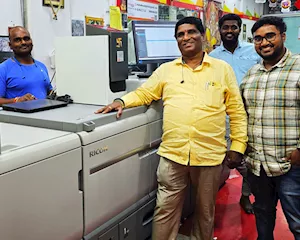
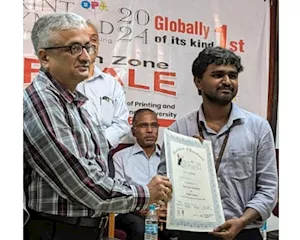

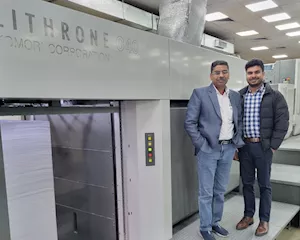
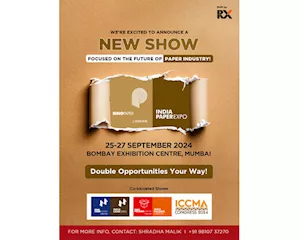

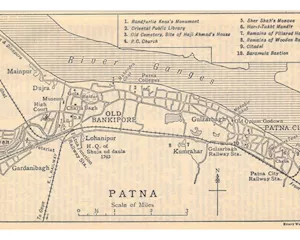
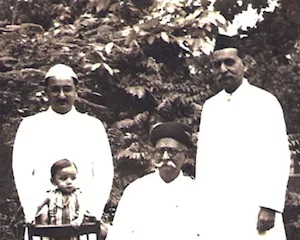
 See All
See All